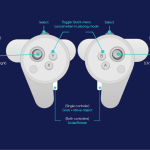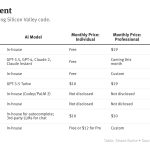
 The Sanku three gaps pattern is a theory about trends. The word itself means candlestick and, for those who pay attention to trends, this theory implies that there are 3 gaps within one trend. You can expect a reversal when the third gap hits, which should shift towards a new trend.
The Sanku three gaps pattern is a theory about trends. The word itself means candlestick and, for those who pay attention to trends, this theory implies that there are 3 gaps within one trend. You can expect a reversal when the third gap hits, which should shift towards a new trend.
When Can You Use The Sanku 3 Gaps Pattern?
Knowing when to hold or when to trade is not something you can master, but mathematics proves that you can make informed choices by following patterns. When you follow a pattern, like the Sanku Pattern, you are betting that a price will dramatically change by the time your asset is nearing its third gap.
You can think of the Sanku Pattern as an exhaustion pattern that happens to occur three times. You can recognize the trend that might follow this pattern because they are either aggressive or protracted trends.
You should also remember that the Sanku Pattern can only appear when you are trading within bar charts or candlestick charts. This means that the pattern cannot be used with standard line charts.
Understanding The Types Of Gaps
Most analysts, like the kind you find in AlfaTrade, can also help you identify the most common gaps associated with the Sanku Pattern.
There are 4 different types of gaps that you should know when following trends. The 4 types are the following:
- The Common Gap
- The Breakaway Gap
- The Runaway Gap
- The Exhaustion Gap
You should be familiar with all of these gaps, but do not worry if you are not too familiar with them. You will begin to understand these gaps in regards to different patterns the longer you trade.
But, for now, you should pay attention to the runaway gap and the exhaustion gap. The runaway gap is usually found somewhere in the middle of any given trend. You might find this gap right after the trend makes a strong but undramatic move. You want to see this type of gap because it usually means the trend is on a steady course forward.
The exhaustion gap is the most noticeable and recognizable gap in regards to Sanku Patterns. This gap is usually associated with either panic or too much hype. These two themes happen because you are likely to see a dramatic change in price right before the exhaustion gap takes place. This is the point where the reversal price is about to hit. You should be able to notice that the gap is about to start because there are large changes in the volume of buy-ins or sell-outs.
And–though these gaps are the kind you will be dealing with while using the Sanku Pattern–you should still know them. The breakaway gap usually occurs right at the start of a trend. To put it simply, the breakaway gap occurs right after a security has traded into a consolidation pattern. The common gap happens periodically within a security’s price. Most experts keep an eye on the common gap but rarely trade because of the fluctuations with this type of gap.
There is still much more that you can learn when trading and using the Sanku Pattern. For one, most experts suggest that you pay attention to other forms of patterns with the Sanku Pattern. You want to do this to increase your chances of making the right choice when it comes to a trade. Just remember that nothing is promised when it comes to trading, but you definitely can make an educated guess mastering the Sanku Pattern.








